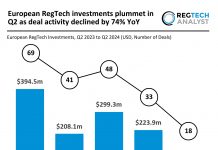Position Green recently provided a comprehensive and detailed timeline for the sustainability journey of businesses.
Alignment among top sustainability reporting frameworks is a crucial juncture in the shift towards a sustainable economy.
Such alignment brings a plethora of benefits for stakeholders, such as increased comparability, compliance simplification, improved data quality, and boosted transparency and accountability. Despite these advantages, it remains ambiguous how companies should utilise these frameworks to devise a potent sustainability strategy.
One significant challenge is the typically lean nature of corporate sustainability teams. Without careful planning, these teams can easily be overwhelmed, leading to less than optimal results. It’s imperative not to rush and try to achieve everything within a single quarter. By adhering to a structured approach, teams can maintain engagement throughout each phase, ensuring that their findings seamlessly integrate with the company’s overarching strategy.
From September to November, it’s about laying the groundwork. Understanding the material topics related to your company’s sustainability is essential. With the European Reporting Standards (ESRS) now in place, there’s an obligation for companies to undergo a double-materiality assessment. This exercise ensures that firms are not only cognizant of their environmental footprint but also the financial implications arising from our evolving ecosystems. Moreover, the end of this period should see companies undertaking risk assessments in line with TCFD and TNFD guidelines. The exact approach varies based on a company’s sustainability maturity and federal regulations they’re subject to.
Transitioning into November to January, it’s time to chart the way forward. Armed with the gathered data, firms should conduct a gap analysis. This analysis illuminates the path for refining sustainability practices in the upcoming year, identifying areas of concern and opportunities alike. Subsequently, it’s essential to define tangible targets for sustainability. Opting for science-based targets through SBTi can facilitate rigorous internal discussions about the company’s decarbonisation ambitions.
From January to April, the spotlight is on corporate reporting. The trend leans towards synchronising the release of sustainability reports with annual financial reports. For firms following the calendar year, an April publication is advised. This phase revolves around updating GHG data and using accumulated data to craft a compelling narrative about the company’s sustainability efforts over the preceding year.
Lastly, from April to July, the focus shifts to both voluntary and mandatory disclosures. Having crafted a detailed sustainability report, firms should be equipped to engage with any disclosure framework, a timeline that complements the release of the CDP in mid-April. Meeting the CDP’s criteria showcases a firm’s dedication to sustainability and its integration within the corporate ERM.
Adhering to this timeline, as proposed by Position Green, ensures companies are primed to transparently convey their sustainability efforts, addressing the increasing demands of a diverse group of stakeholders.
Read the full post here.
Copyright © 2023 RegTech Analyst
Copyright © 2018 RegTech Analyst






